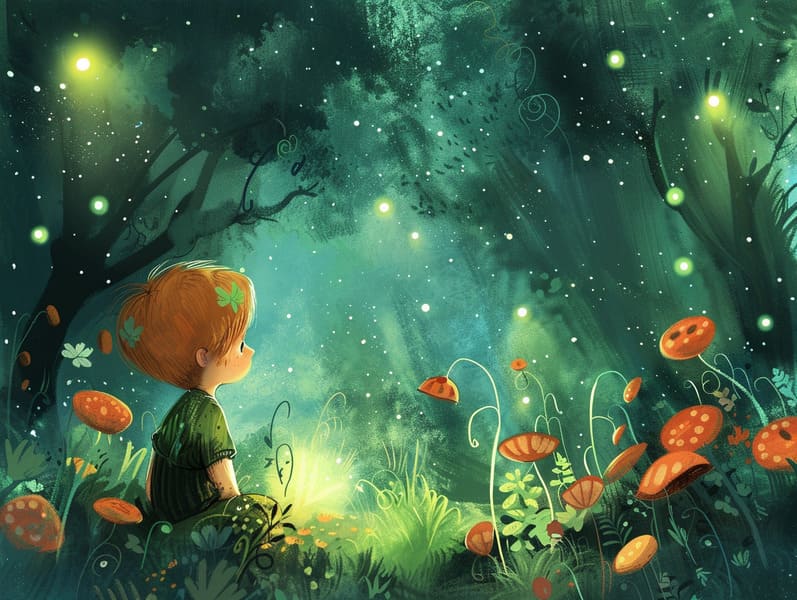
Short fairy tales have deep roots. These tales have been passed down from one generation to the next ages before they were ever put on paper. They developed from a variety of civilizations, including Indigenous traditions. They were initially transmitted among older generations, often carrying themes and messages aligned with the societal norms and beliefs of the time.
The famous Grimm duo, Jacob and Wilhelm (the Grimm brothers), were among the first to compile many of these beloved narratives. Their volume, "Grimm's Fairy Stories," included stories like "Cinderella," "Little Brother and Little Sister," and "The True Story of Snow White," which have since become hallmarks in the world of iconic fairy tales. Similarly, Hans Christian Andersen's enchanting fairy tales, such as "The Mermaid," and "The Ugly Duckling," have captivated hearts worldwide, cementing their place in the pantheon of iconic fairy tales.
Despite their historical roots, classic fairy tales remain as impactful as ever, especially as children's night stories. These fantastical tales are now available in multiple formats, including artistically illustrated books, whimsical animations, and digital storybooks.
Their ongoing significance can be ascribed to several captivating elements:
Life Lessons: Classic fairy tales often offer important moral lessons. Narratives like "The Shepherd Boy and the Wolf" teach the significance of truthfulness, while "The Race of the Tortoise and the Hare" highlight the values of perseverance and meekness. These tales offer children clear distinctions between right and wrong, shaping their moral compass in a mild yet impactful way.
Compassion and Insight: Classic fairy tales frequently include beings facing obstacles and hardships, fostering audiences to relate with their struggles and rally behind their triumphs. For instance, "The Tale of Beauty and the Beast" emphasizes the benefit of looking deeper to acknowledge the inner self of a person, strengthening tenderness and awareness.
Cultural Understanding: Many timeless fairy tales are saturated in the cultural contexts from which they emerged. Reading these stories can provide informative snapshots into different traditions, developing a sense of cultural insight and recognition.
Creativity and Imagination: The supernatural elements in classic fairy tales—talking beasts—engender children’s fantasies. These tales lead readers to mythical realms, promoting inventive thinking and a sense of amazement that lasts a lifetime.
Classic fairy tales are not only alluring but also informative. They function as entrancing tools in building various brain and heart skills in the young. When traditional fairy tales are recited, they cultivate linguistic abilities by teaching new terms and complex sentence structures. This practice also cultivates hearing perception and attentiveness, as young readers remain attentive, looking forward to see what happens next.
Furthermore, reflecting on the themes and characters of classic fairy tales can sharpen critical thinking and analytical skills. Little ones are shown to identify patterns, anticipate outcomes, and catch on to cause and effect. These talks also facilitate young readers convey their thoughts and feelings, cultivating their emotional intelligence.
In today’s electronic age, the proliferation of free fairy tales online has made these stories more within reach than ever. Internet resources and programs make available broad selections of bedtime fairy tales that can be enjoyed or listened to anytime, anywhere. Fairy tales narrated are particularly well-received, presenting an interactive way for kids to take part in these bewitching tales. Read-aloud stories and narrated videos take characters and settings to life, often accompanied by magical musical scores and musical scores that heighten the storytelling experience.
The timeless fascination of classic fairy tales lies in their ability to evolve to present eras while keeping their underlying messages. Contemporary revisions of these stories often spotlight more multicultural protagonists and modern settings, making them relevant to today’s audience. However, the key lessons of valor, kindness, and fair-mindedness remain unchanged, continuing to affect audiences of all ages.
Old fairy tales also offer a sense of ease and closeness. They deliver up a structured narrative with a transparent beginning, middle, read more and end, often closing with the finalization of conflicts and the triumph of right over wrong. This dependability can be relieving for children, distributing a sense of constancy in an ever-changing world.
Classic fairy tales continue to delight and instruct new generations, maintaining their fascination and significance in modern society. As children's bedtime stories, they supply a perfect blend of delight and instruction, facilitating moral values, empathy, and creativity. The accessibility of web-based fairy tales and the prevalence of fairy tales read aloud ensure that these ancient tales remain obtainable to new generations.
By keeping and broadcasting these fairy tales, we continue to admire the rich tapestry of mythology and cultural heritage. Whether you are enjoying a artistically illustrated book, viewing a internet library, or listening through an sound book, the beauty of Grimm's fairy tales is always within reach. These stories point out of the unending force of storytelling and its ability to link us across generations and cultures.
If you are seeing a vibrantly illustrated book, enjoying a web-based library, or listening to an audiobook, the enchantment of famous fairy tales is always within reach.
These stories teach us of the unending nature of tales and its ability to bring us together across centuries and lands, weaving a spell that captivates and teaches alike.
Comments on “The Formation of Ancient Fairy Tales and the Unfading Loveliness.”